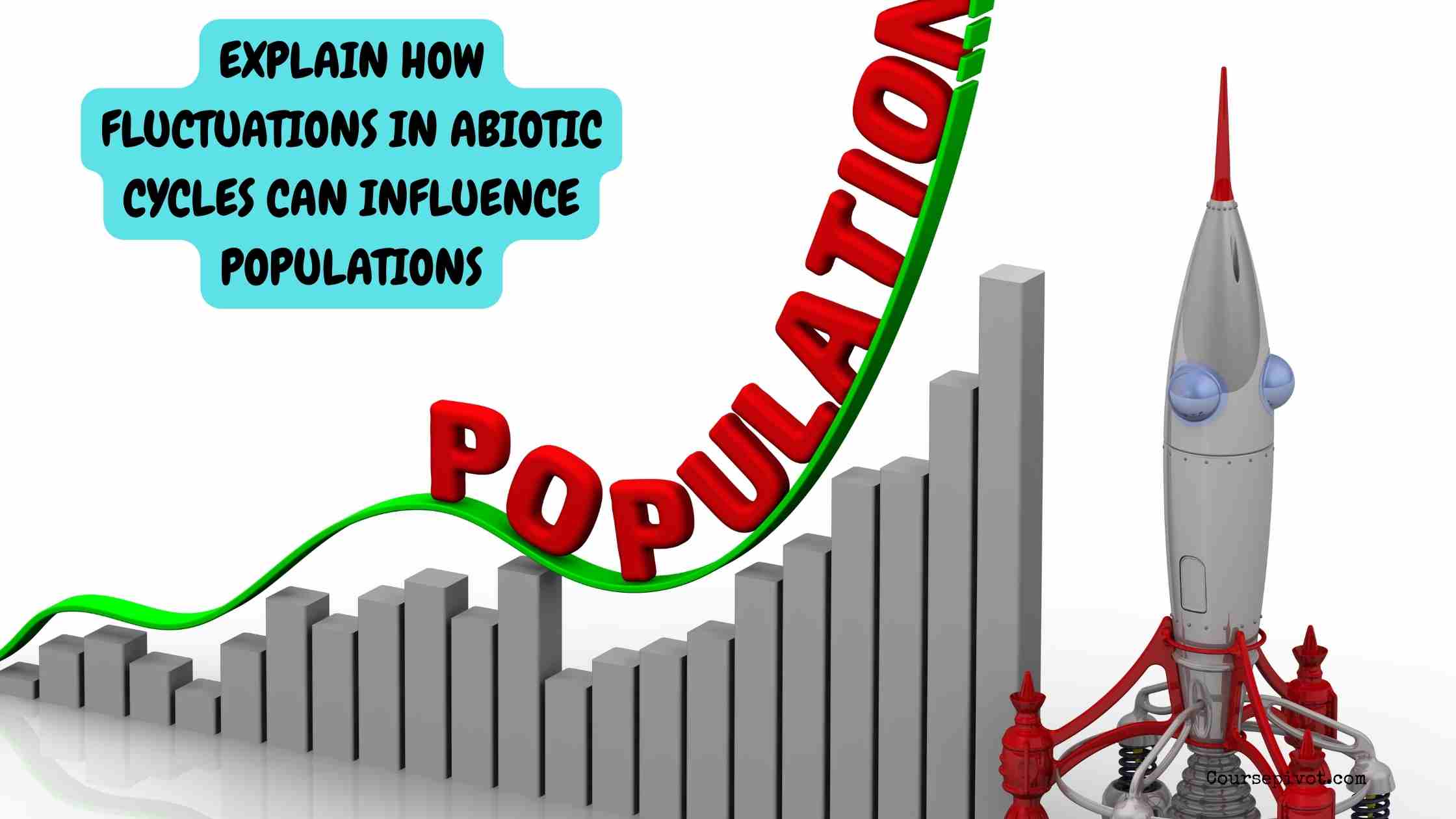
How Fluctuations in Abiotic Cycles Can Influence Populations
Abiotic cycles—natural processes like the water cycle, carbon cycle, and nutrient cycles—form the backbone of life on Earth. These cycles regulate the environment, but when they fluctuate, the effects ripple through ecosystems, impacting populations of plants, animals, and even humans. I’ve always been fascinated by how interconnected nature is, and studying these cycles shows just how delicate that balance can be. What happens when these cycles shift? How do populations cope with the changes? Let’s explore the intricate ways abiotic cycle fluctuations shape the living world.
Table of Contents
From drought-stricken forests to nutrient-poor soils, disruptions in these cycles can make or break survival. Understanding their influence is key to grasping ecosystem dynamics. In this article, I’ll dive into how changes in abiotic cycles affect populations, breaking down the mechanisms and consequences. Ready to see nature’s unseen forces at work? Let’s get started.
Understanding Abiotic Cycles
Abiotic cycles are the non-living processes that sustain ecosystems. They include the water cycle, carbon cycle, nitrogen cycle, and more. These cycles move essential elements like water, carbon, and nutrients through the environment, supporting life. When they fluctuate—due to natural events or human activity—populations face challenges that can alter their size, distribution, and survival.
Why do these cycles matter so much? They provide the resources organisms need to thrive. A shift in one cycle can trigger a domino effect, impacting entire food webs. Let’s examine how fluctuations in key abiotic cycles influence populations.
The Water Cycle and Population Dynamics
The water cycle governs the availability of water, a fundamental requirement for life. Fluctuations, like droughts or floods, can drastically affect populations. I’ve seen reports of entire species struggling when water becomes scarce or excessive—nature doesn’t mess around.
Drought and Water Scarcity
When precipitation decreases, ecosystems dry out. Plants wilt, reducing food for herbivores. In turn, predators suffer as prey populations decline. For example, during the 2011-2016 California drought, deer populations dropped due to limited forage, impacting local predators like mountain lions.
- Reduced reproduction: Water scarcity stresses organisms, lowering birth rates.
- Habitat loss: Drying rivers and lakes force species to migrate or perish.
- Competition spikes: Limited water pits species against each other, favoring the strong.
Have you ever wondered how animals survive in deserts? They adapt, but prolonged droughts push even the hardiest species to their limits.
Flooding and Excess Water
Too much water can be just as destructive. Floods destroy habitats, drown plants, and displace animals. In 2019, Midwest U.S. flooding reduced insect populations, affecting birds that relied on them for food. Wet conditions also promote diseases like fungal infections in amphibians, decimating their numbers.
Populations in flood-prone areas often face relocation or extinction. Water cycle fluctuations, whether too little or too much, reshape who survives and where.
The Carbon Cycle and Climate Impacts
The carbon cycle regulates atmospheric carbon dioxide, influencing climate and temperature. Fluctuations, often driven by human activity like burning fossil fuels, disrupt ecosystems. Rising CO2 levels lead to global warming, which I believe is one of the biggest challenges for populations today.
Temperature Shifts
Warmer temperatures alter habitats. Polar bear populations, for instance, are shrinking as Arctic ice melts, reducing their hunting grounds. In 2020, studies estimated a 30% decline in some polar bear populations due to climate-driven ice loss.
- Shifted ranges: Species move to cooler areas, competing with existing populations.
- Disrupted breeding: Warmer seasons can misalign breeding cycles with food availability.
- Coral bleaching: Higher ocean temperatures kill coral reefs, collapsing marine ecosystems.
What does this mean for the future? If carbon cycle disruptions continue, many species may face extinction as habitats vanish.
Ocean Acidification
Excess carbon dioxide absorbed by oceans lowers pH levels, harming marine life. Shellfish and corals struggle to build shells, reducing their populations. This ripples up the food chain, affecting fish, seabirds, and humans who rely on seafood. The decline of oyster populations in the Pacific Northwest is a stark example—local economies and ecosystems both suffer.
The Nitrogen Cycle and Nutrient Imbalances
The nitrogen cycle controls nutrient availability for plants and animals. Human activities, like fertilizer overuse, cause fluctuations that disrupt populations. Too much or too little nitrogen can throw ecosystems out of balance.
Nutrient Overload
Excess nitrogen from agricultural runoff fuels algal blooms in water bodies. These blooms deplete oxygen, creating “dead zones” where aquatic life can’t survive. The Gulf of Mexico’s dead zone, spanning over 6,000 square miles in 2023, has decimated fish and shrimp populations.
- Toxic environments: Algal toxins harm wildlife and humans.
- Food chain disruption: Loss of fish affects predators and fishing communities.
- Plant overgrowth: Excess nitrogen boosts invasive plants, outcompeting native species.
I’ve read about lakes turning green from algae—imagine the impact on local wildlife. It’s a vivid reminder of how nitrogen imbalances harm populations.
Nitrogen Deficiency
Conversely, nitrogen shortages stunt plant growth, reducing food for herbivores. In degraded soils, like those in overfarmed regions, plant populations decline, forcing animals to migrate or starve. This is especially tough for species with limited mobility, like small mammals or insects.
Broader Ecological and Human Impacts
Fluctuations in abiotic cycles don’t just affect individual species—they reshape entire ecosystems. Food webs collapse when key species decline. Human populations face challenges too, from crop failures due to drought to fishery losses from ocean acidification.
Ecosystem Collapse
When cycles falter, ecosystems lose resilience. For example, Amazon rainforest deforestation disrupts local water cycles, reducing rainfall and threatening species like jaguars and macaws. A 2022 study warned that 40% of the Amazon could become savanna-like if disruptions continue, wiping out countless populations.
Read our blog on How the Destruction of Forests Affects Atmospheric Levels of Carbon
Human Consequences
Humans aren’t immune. Droughts reduce crop yields, driving food insecurity. In 2021, East African droughts cut agricultural output by 20%, displacing millions. Water and nutrient cycle disruptions also raise costs for water treatment and soil restoration, straining economies.
Why should we care? Because our survival is tied to these cycles. Ignoring fluctuations risks food shortages, economic strain, and loss of biodiversity.
Takeaway
Fluctuations in abiotic cycles—water, carbon, nitrogen, and beyond—profoundly influence populations. Droughts starve ecosystems, carbon imbalances shift climates, and nitrogen disruptions alter food webs. I’ve seen how these changes ripple, from struggling wildlife to strained human communities. The evidence is clear: stable cycles are vital for life.
These disruptions challenge species’ survival, reshape habitats, and test human resilience. Yet, understanding these impacts empowers us to act. We can restore ecosystems, reduce emissions, and manage resources wisely. The question is, will we step up? Protecting abiotic cycles is protecting our future—let’s make it count.
Cite this article
You can copy and paste your preferred citation format below.
Martin, L. & Arquette, E.. (2025, May 30). How Fluctuations in Abiotic Cycles Can Influence Populations. Coursepivot.com. https://coursepivot.com/blog/explain-how-fluctuations-in-abiotic-cycles-can-influence-populations/



